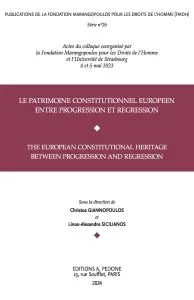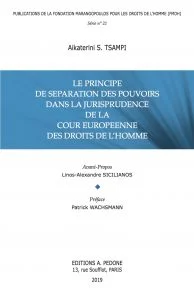What about a constitutional principle regarding the institutional organisation of a State, such as the separation of powers, in the case-law of an international human rights court, notably the European Court of Human Rights? Although it would be daring to prove that the Strasbourg judge applies to a certain extent the theory of separation of powers, it is nevertheless relevant to answer whether the adopted solutions by the European Court of Human Rights outline a coherent vision of how the relations among such powers should, in its view, be drawn.
In addition, one shall not ignore the fact that the theory of separation of powers, as conceived in the context of contemporary liberal States, only implies the recognition that a minimum base of solutions is granted. It is therefore evident that the primary aspiration of separation of powers lies in safeguarding the legislative and judicial branches from executive overreach. The judge of the European Court of Human Rights adopts this position. While the principle of separation of powers is not explicitly articulated by the Court, at least with the precision required, it nonetheless remains a principle already existent in the case-law of the Strasbourg Court with a promising future.
Publication Details
-
Date of publication:
2019
-
Publisher:
Paris: Editions A. Pedone, 2019, 384 p.
-
ISBN:
9782233009043
-
Series:
Publications de la Fondation Marangopoulos pour les droits de l'homme ; 21



